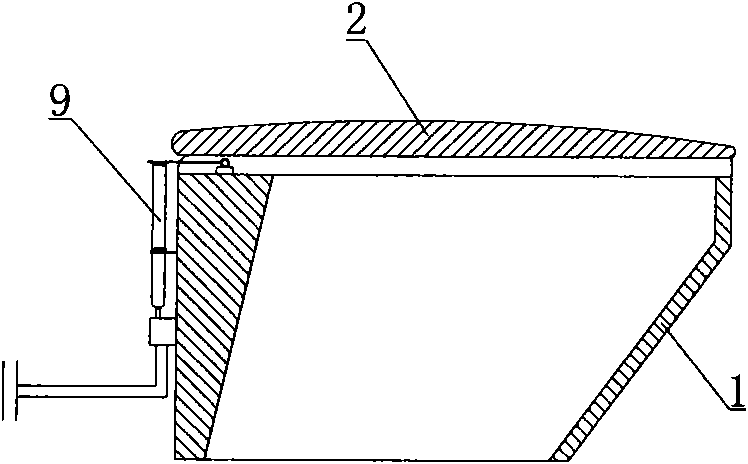Rinse-free closestool for separating excrement from urine and respectively recycling excrement and urine
A flush-free, toilet technology, applied in applications, home appliances, resistance to vector-borne diseases, etc., can solve problems such as difficult management, increase urban sewage discharge, waste resources, etc., to save domestic water and costs, and increase community. Benefit and cost saving considerable effect
- Summary
- Abstract
- Description
- Claims
- Application Information
AI Technical Summary
Problems solved by technology
Method used
Image
Examples
Embodiment
[0025] In April 2007, it was tested on a residential building developed by Laiwu Yukai Real Estate Company. This building is a new building. The drawings were designed with the assistance of technicians from Laiwu Planning and Design Institute. As of October 2009, it has been in operation for one and a half years .
[0026] refer to figure 1 , 2, 3, 4, 5 further illustrate the embodiments of the present invention. The water-free toilet used for separate treatment of feces and urine is composed of a seat case 1 and a seat case cover 2. The seat case cover 2 is fixedly connected to the rear of the seat case 1 through a rotating shaft. It is characterized in that the seat case 1 The bottom of the stool and urine separator 3 is connected to the stool and urine separator 3, and the stool and urine are separated by the stool and urine separator 3. The urine collection pipe 4 is connected to the bottom of the stool and urine separator 3, and the urine collection pipe 4 is connected...
PUM
 Login to View More
Login to View More Abstract
Description
Claims
Application Information
 Login to View More
Login to View More - R&D
- Intellectual Property
- Life Sciences
- Materials
- Tech Scout
- Unparalleled Data Quality
- Higher Quality Content
- 60% Fewer Hallucinations
Browse by: Latest US Patents, China's latest patents, Technical Efficacy Thesaurus, Application Domain, Technology Topic, Popular Technical Reports.
© 2025 PatSnap. All rights reserved.Legal|Privacy policy|Modern Slavery Act Transparency Statement|Sitemap|About US| Contact US: help@patsnap.com



